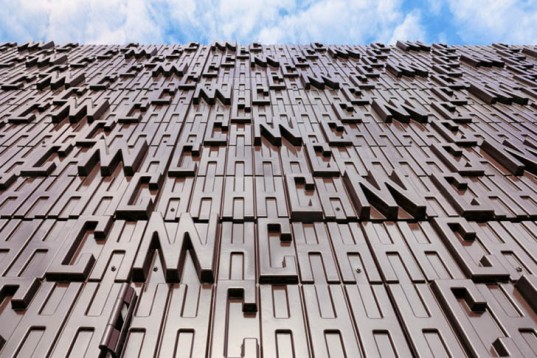A Dutch architecture firm claims to have created the world’s first “bio façade”. The small building is clad with panels made from hemp and bio resin.
Studio Marco Vermeulen, who designed the new gas receiving station located at a food industrial park in New Prinsenland, The Netherlands, says the development of plant-based materials is important for the construction industry because oil-based materials will become scarce.
The green materials will largely be based on organic residues from agriculture and horticulture– Studio Marco Vermeulen
The firm believes the building signals the start of a transition to a “biobased economy”.
“The green materials will largely be based on organic residues from agriculture and horticulture,” it said on its website. “In the future biobased economy these residues (biomass) will first be processed (valued) into usable raw materials.”
The station, completed last year, is clad with panels made of “Nabasco”, a composite of bio resin and hemp fibre produced by NPSP Composites in Haarlem.
As an added detail the panels display the Periodic Table symbols for the elements making up natural gas, in the correct ratio: hydrogen (H), carbon (C) and nitrogen (N).

The panels display the Periodic Table symbols for the elements making up natural gas – hydrogen (H), carbon (C) and nitrogen (N) (Studio Marco Vermeulen)
The Agro & Food Cluster in New Prinsenland is a 600-hectare development site for horticulture and agri-business in Dinteloord, 30 minutes’ drive south of Rotterdam.Â
Says it sets out to be an example of a sustainable but intensive but sustainable food production where cycles of energy, water and waste streams will be closed as much as possible.Â
The greenhouse area can make use of the waste heat and C02 created by the sugar factory, for example.
For more, click here.






